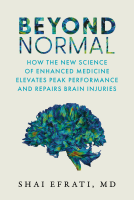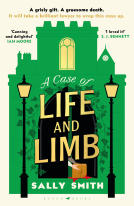
Vagina Obscura
An Anatomical Voyage
by Rachel E. Gross
This title was previously available on NetGalley and is now archived.
Send NetGalley books directly to your Kindle or Kindle app
1
To read on a Kindle or Kindle app, please add kindle@netgalley.com as an approved email address to receive files in your Amazon account. Click here for step-by-step instructions.
2
Also find your Kindle email address within your Amazon account, and enter it here.
Pub Date 29 Mar 2022 | Archive Date 28 Feb 2022
Talking about this book? Use #VaginaObscura #NetGalley. More hashtag tips!
Description
A scientific journey to the center of the female body.
The Latin term for the female genitalia, pudendum, means “parts for which you should be ashamed.” Until 1651, ovaries were called female testicles. The fallopian tubes are named for a man. Named, claimed, and shamed: Welcome to the story of the female body, as penned by men.
Today, a new generation of (mostly) women scientists is finally redrawing the map. With modern tools and fresh perspectives, they’re looking at the organs traditionally bound up in reproduction—the uterus, ovaries, vagina—and seeing within them a new biology of change and resilience. Through their eyes, journalist Rachel E. Gross takes readers on an anatomical odyssey to the center of this new world—a world where the uterus regrows itself, ovaries pump out fresh eggs, and the clitoris pulses beneath the surface like a shimmering pyramid of nerves. Full of wit and wonder, Vagina Obscura is a celebratory testament to how the landscape of knowledge can be rewritten to better serve everyone.
About the Author:
Rachel E. Gross is an award-winning science journalist based in Brooklyn, New York. A 2018-19 Knight Science Journalism Fellow and former digital science editor of Smithsonian magazine, she writes for the BBC Future, the New York Times, and Scientific American.
Advance Praise
"Through her seamless storytelling and meticulous research, Rachel Gross shows how long we have misunderstood the bodies of half the people who have ever lived, how much we still have to learn, and how wondrous and rewarding that quest can be. Vagina Obscura is science writing at its finest—revelatory, wry, consequential, necessary, and incredibly hard to put down." - Ed Yong, Pulitzer Prize-winning journalist and author of I Contain Multitudes
"Vagina Obscura is a marvel of a book—lyrical, compassionate, infuriating, insightful, and wise. Rachel E. Gross's exploration of the history, science and politics of female anatomy should be read by women, men, and everybody seeking to be smarter about who we really are." - Deborah Blum, Pulitzer Prize-winning journalist and author of The Poison Squad
"Rachel E. Gross’s mesmerizing and often humorous Vagina Obscura vividly uncovers the scientific and popular biases that have colluded to stem our knowledge about 'down there.' Gross brilliantly investigates questions regarding sex, sexuality, and reproduction that have been hidden, made shameful, or just never asked." - Elizabeth Reis, author of Bodies in Doubt: An American History of Intersex
"With the perfect mix of verve and nerve, clarity and composure, Rachel Gross finally gives this organ system its due. I loved every fold and crevice of this book." - Florence Williams, author of Breasts: An Unnatural History
"Well-researched and beautifully told, this story of the vagina exposes an alarming lack of scientific curiosity about female genitals across species and centuries. But its brilliance lies in the revolution it heralds. A gripping read that should inspire significant change in science and society." - Gabrielle Jackson, author of Pain and Prejudice
Available Editions
| EDITION | Hardcover |
| ISBN | 9781324006312 |
| PRICE | US$30.00 (USD) |
Featured Reviews
 Krista T, Bookseller
Krista T, Bookseller
Vagina Obscura is a fascinating look at the history, science, and politics of female sexual and reproductive anatomy (as the terms may be used to describe a variety of cis-gendered, trans-gendered, and non-binary bodies), tracing what we have learned about these body parts from the time of Hippocrates (who called them “the shame parts”), through Darwin and Freud (who both dismissed the “passive” vagina as less important to reproduction than the “dynamic” penis), to modern researchers (whose work was most surprising to me by virtue of its very recentness). This is a highly readable book — author Rachel E. Gross writes about the maddeningly long history of the dismissal of female intimate health concerns without anger or stridency (or any of the other words used to dismiss women’s writing about “women’s issues”) — and whether or not one is looking to learn something about the science of female anatomy, the research, interviews, and history all make for a captivating reading experience. I learned much and thoroughly enjoyed the writing; I can’t ask for more.
It’s highly ridiculous that vaginas are such a tense topic. Do you know how miraculous the things a vagina can do are? I appreciate this book and all of the knowledge it contains. I’m always going to support the furthering of knowledge, and this book is an excellent starting point into all things vagina. Several mothers come into my work looking for helpful guides to explain sex/anatomy, so this will be my go-to recommendation from here on out.
Thanks so much to NetGalley and the publisher for this eARC in exchange for an honest review!
 Educator 901032
Educator 901032
A fascinating foray into the nether regions of the "fairer of the species". Rachel Gross carefully recounts the history of women who struggled to understand their anatomy and orgasmic experience (or lack there of) when it didn't match the norm. Personal accounts of women who suffered from cultural practices meant to help them are aided through the help of doctors helping recover patients' mutilated bodies. Carefully written and painstakingly researched, Ms Gross delves into some other examples from the animal kingdom to analyze their copulation adaptations as compared to humans. Popping back. and forth through history, the author intricately weaves the patchy scientific research and assumptions together with modern-day elements that shed light and provide for new understandings of female reproductive anatomy. Navigate from the macro of sexual selection in populations to the microbiome that keeps everything ok "down there". This book helped me better understand myself better than any class ever could have...and I feel like some of my tissues have superpowers. A great, comprehensive read with endnotes and exhaustive citations for further reading.
 catherine h, Reviewer
catherine h, Reviewer
Where was this book when I was growing up? I would have bought it for girls in my family as they were growing up. Loads of useful info. Should be used in a classroom during sex ed. I was always shocked and dismayed to learn, when I was growing up, that all medicine was geared to average white males and just adjusted for the rest of the human race. It hasn;t surprised me in the least since, that most male doctors know so little about how our bodies work. I mean, really, who wants to exercise to ease cramps???How exactly does THAT work?? And childbirth was made into an illness after males took over birthing. Gah!
Kudos to the author!
 Regina M, Reviewer
Regina M, Reviewer
This is a very thorough look at the female anatomy, for centuries people in authority have decided what a woman anatomy is worth and this book will show you how important a woman genitalia is. For century men have decided that women shouldn't have pleasure when she is intimate and again this book will show you it's not true. What I like the most about this book is the discussion on the new research that is important to women, such as endometriosis, because for years it wasn't important enough but it should have been.
Another part of this book I liked is learning how anatomically close a male and female is and all it is, is chemical and most parts are interchangeable which is very interesting and should show how equal we are.
I found the best way to read this book is take your time and enjoy the immersion into the female world that matters to us and you will learn a lot. By the way the artwork is fabulous.
I want to thank W. W. Norton & Company and NetGalley for the privileges' of reading this beautiful book
Readers who liked this book also liked:
Rick Riordan; Mark Oshiro
Children's Fiction, LGBTQIA, Teens & YA
Keith Martin; Konstantinos Mersinas; Guido Schmitz; Jassim Happa
Business, Leadership, Finance, Computers & Technology, Reference


















